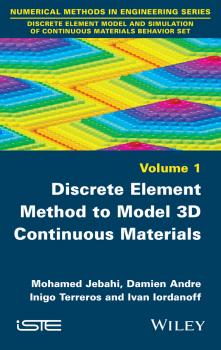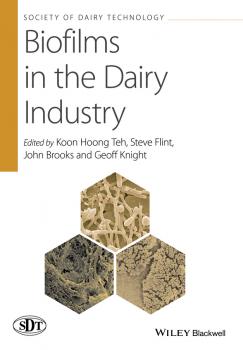Техническая литература
Различные книги в жанре Техническая литератураMobile Ad Hoc Networking. The Cutting Edge Directions
"An excellent book for those who are interested in learning the current status of research and development . . . [and] who want to get a comprehensive overview of the current state-of-the-art." —E-Streams This book provides up-to-date information on research and development in the rapidly growing area of networks based on the multihop ad hoc networking paradigm. It reviews all classes of networks that have successfully adopted this paradigm, pointing out how they penetrated the mass market and sparked breakthrough research. Covering both physical issues and applications, Mobile Ad Hoc Networking: Cutting Edge Directions offers useful tools for professionals and researchers in diverse areas wishing to learn about the latest trends in sensor, actuator, and robot networking, mesh networks, delay tolerant and opportunistic networking, and vehicular networks. Chapter coverage includes: Multihop ad hoc networking Enabling technologies and standards for mobile multihop wireless networking Resource optimization in multiradio multichannel wireless mesh networks QoS in mesh networks Routing and data dissemination in opportunistic networks Task farming in crowd computing Mobility models, topology, and simulations in VANET MAC protocols for VANET Wireless sensor networks with energy harvesting nodes Robot-assisted wireless sensor networks: recent applications and future challenges Advances in underwater acoustic networking Security in wireless ad hoc networks Mobile Ad Hoc Networking will appeal to researchers, developers, and students interested in computer science, electrical engineering, and telecommunications.
Discrete Element Method to Model 3D Continuous Materials
Complex behavior models (plasticity, cracks, visco elascticity) face some theoretical difficulties for the determination of the behavior law at the continuous scale. When homogenization fails to give the right behavior law, a solution is to simulate the material at a meso scale in order to simulate directly a set of discrete properties that are responsible of the macroscopic behavior. The discrete element model has been developed for granular material. The proposed set shows how this method is capable to solve the problem of complex behavior that are linked to discrete meso scale effects.
Advances in Bioenergy. The Sustainability Challenge
The increasing deployment of bioenergy frequently raises issues regarding the use of land and raw materials, infrastructure and logistics. In light of these sometimes conflicting interests Advances in Bioenergy provides an objective and wide-ranging overview of the technology, economics and policy of bioenergy. Offering an authoritative multidisciplinary summary of the opportunities and challenges associated with bioenergy utilization, with international researchers give up-to-date and detailed information on key issues for biomass production and conversion to energy. Key features: *Discusses different bioenergy uses such as transportation fuels, electricity and heat production. *Assesses emerging fields such as bio-based chemicals and bio-refineries. *Debates conditions for the mobilization of sustainable bioenergy supply chains and outlines governance systems to support this mobilization. * Dedicated chapters to sustainability governance and emerging tools such as certification systems and standards supporting growth of a sustainable bioenergy industry. *Considers the political, environmental, social and cultural context related to the demand for energy resources, the impact of this demand on the world around us, and the choices and behaviours of consumers. This book will be a vital reference to engineers, researchers and students that need an accessible overview of the bioenergy area. It will also be of high value for politicians, policymakers and industry leaders that need to stay up to date with the state-of-the-art science and technology in this area.
Optimal Design of Switching Power Supply
A contemporary evaluation of switching power design methods with real world applications • Written by a leading author renowned in his field • Focuses on switching power supply design, manufacture and debugging • Switching power supplies have relevance for contemporary applications including mobile phone chargers, laptops and PCs • Based on the authors' successful «Switching Power Optimized Design 2nd Edition» (in Chinese) • Highly illustrated with design examples of real world applications
Enablers for Smart Cities
Smart cities are a new vision for urban development. They integrate information and communication technology infrastructures – in the domains of artificial intelligence, distributed and cloud computing, and sensor networks – into a city, to facilitate quality of life for its citizens and sustainable growth. This book explores various concepts for the development of these new technologies (including agent-oriented programming, broadband infrastructures, wireless sensor networks, Internet-based networked applications, open data and open platforms), and how they can provide smart services and enablers in a range of public domains. The most significant research, both established and emerging, is brought together to enable academics and practitioners to investigate the possibilities of smart cities, and to generate the knowledge and solutions required to develop and maintain them.
Advanced Magnetic and Optical Materials
Advanced Magnetic and OpticalMaterials offers detailed up-to-date chapters on the functional optical and magnetic materials, engineering of quantum structures, high-tech magnets, characterization and new applications. It brings together innovative methodologies and strategies adopted in the research and development of the subject and all the contributors are established specialists in the research area. The 14 chapters are organized in two parts: Part 1: Magnetic Materials Magnetic Heterostructures and superconducting order Magnetic Antiresonance in nanocomposites Magnetic bioactive glass-ceramics for bone healing and hyperthermic treatment of solid tumors Magnetic iron oxide nanoparticles Magnetic nanomaterial-based anticancer therapy Theoretical study of strained carbon-based nanobelts: Structural, energetical, electronic, and magnetic properties Room temperature molecular magnets – Modeling and applications Part 2: Optical Materials Advances and future of white LED phosphors for solid-state lighting Design of luminescent materials with “Turn-on/off” response for anions and cations Recent advancements in luminescent materials and their potential applications Strongly confined quantum dots: Emission limiting, photonic doping, and magneto-optical effects Microstructure characterization of some quantum dots synthesized by mechanical alloying Advances in functional luminescent materials and phosphors Development in organic light emitting materials and their potential applications
Applied RVE Reconstruction and Homogenization of Heterogeneous Materials
Statistical correlation functions are a well-known class of statistical descriptors that can be used to describe the morphology and the microstructure-properties relationship. A comprehensive study has been performed for the use of these correlation functions for the reconstruction and homogenization in nano-composite materials. Correlation functions are measured from different techniques such as microscopy (SEM or TEM), small angle X-ray scattering (SAXS) and can be generated through Monte Carlo simulations. In this book, different experimental techniques such as SAXS and image processing are presented, which are used to measure two-point correlation function correlation for multi-phase polymer composites. Higher order correlation functions must be calculated or measured to increase the precision of the statistical continuum approach. To achieve this aim, a new approximation methodology is utilized to obtain N-point correlation functions for multiphase heterogeneous materials. The two-point functions measured by different techniques have been exploited to reconstruct the microstructure of heterogeneous media. Statistical continuum theory is used to predict the effective thermal conductivity and elastic modulus of polymer composites. N-point probability functions as statistical descriptors of inclusions have been exploited to solve strong contrast homogenization for effective thermal conductivity and elastic modulus properties of heterogeneous materials. Finally, reconstructed microstructure is used to calculate effective properties and damage modeling of heterogeneous materials.
Layer-by-Layer Films for Biomedical Applications
The layer-by-layer (LbL) deposition technique is a versatile approach for preparing nanoscale multimaterial films: the fabrication of multicomposite films by the LbL procedure allows the combination of literally hundreds of different materials with nanometer thickness in a single device to obtain novel or superior performance. In the last 15 years the LbL technique has seen considerable developments and has now reached a point where it is beginning to find applications in bioengineering and biomedical engineering. The book gives a thorough overview of applications of the LbL technique in the context of bioengineering and biomedical engineering where the last years have witnessed tremendous progress. The first part familiarizes the reader with the specifics of cell-film interactions that need to be taken into account for successful application of the LbL method in biological environments. The second part focuses on LbL-derived small drug delivery systems and antibacterial agents, and the third part covers nano- and microcapsules as drug carriers and biosensors. The fourth and last part focuses on larger-scale biomedical applications of the LbL method such as engineered tissues and implant coatings.
Biofilms in the Dairy Industry
In recent years, the formation and impacts of biofilms on dairy manufacturing have been studied extensively, from the effects of microbial enzymes produced during transportation of raw milk to the mechanisms of biofilm formation by thermophilic spore-forming bacteria. The dairy industry now has a better understanding of biofilms and of approaches that may be adopted to reduce the impacts that biofilms have on manufacturing efficiencies and the quality of dairy products. Biofilms in the Dairy Industry provides a comprehensive overview of biofilm-related issues facing the dairy sector. The book is a cornerstone for a better understanding of the current science and of ways to reduce the occurrence of biofilms associated with dairy manufacturing. The introductory section covers the definition and basic concepts of biofilm formation and development, and provides an overview of problems caused by the occurrence of biofilms along the dairy manufacturing chain. The second section of the book focuses on specific biofilm-related issues, including the quality of raw milk influenced by biofilms, biofilm formation by thermoduric streptococci and thermophilic spore-forming bacteria in dairy manufacturing plants, the presence of pathogens in biofilms, and biofilms associated with dairy waste effluent. The final section of the book looks at the application of modelling approaches to control biofilms. Potential solutions for reducing contamination throughout the dairy manufacturing chain are also presented. Essential to professionals in the global dairy sector, Biofilms in the Dairy Industry will be of great interest to anyone in the food and beverage, academic and government sectors. This text is specifically targeted at dairy professionals who aim to improve the quality and consistency of dairy products and improve the efficiency of dairy product manufacture through optimizing the use of dairy manufacturing plant and reducing operating costs.
Membrane Reactor Engineering. Applications for a Greener Process Industry
Uniquely focussed on the engineering aspects of membrane reactors Provides tools for analysis with specific regard to sustainability Applications include water treatment, wastewater recycling, desalination, biorefineries, agro-food production Membrane reactors can bring energy saving, reduced environmental impact and lower operating costs









